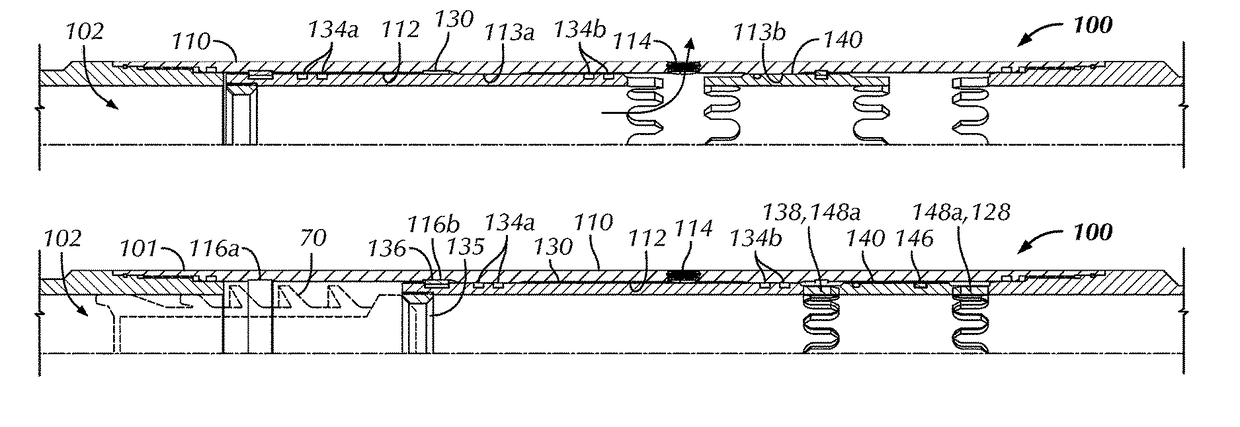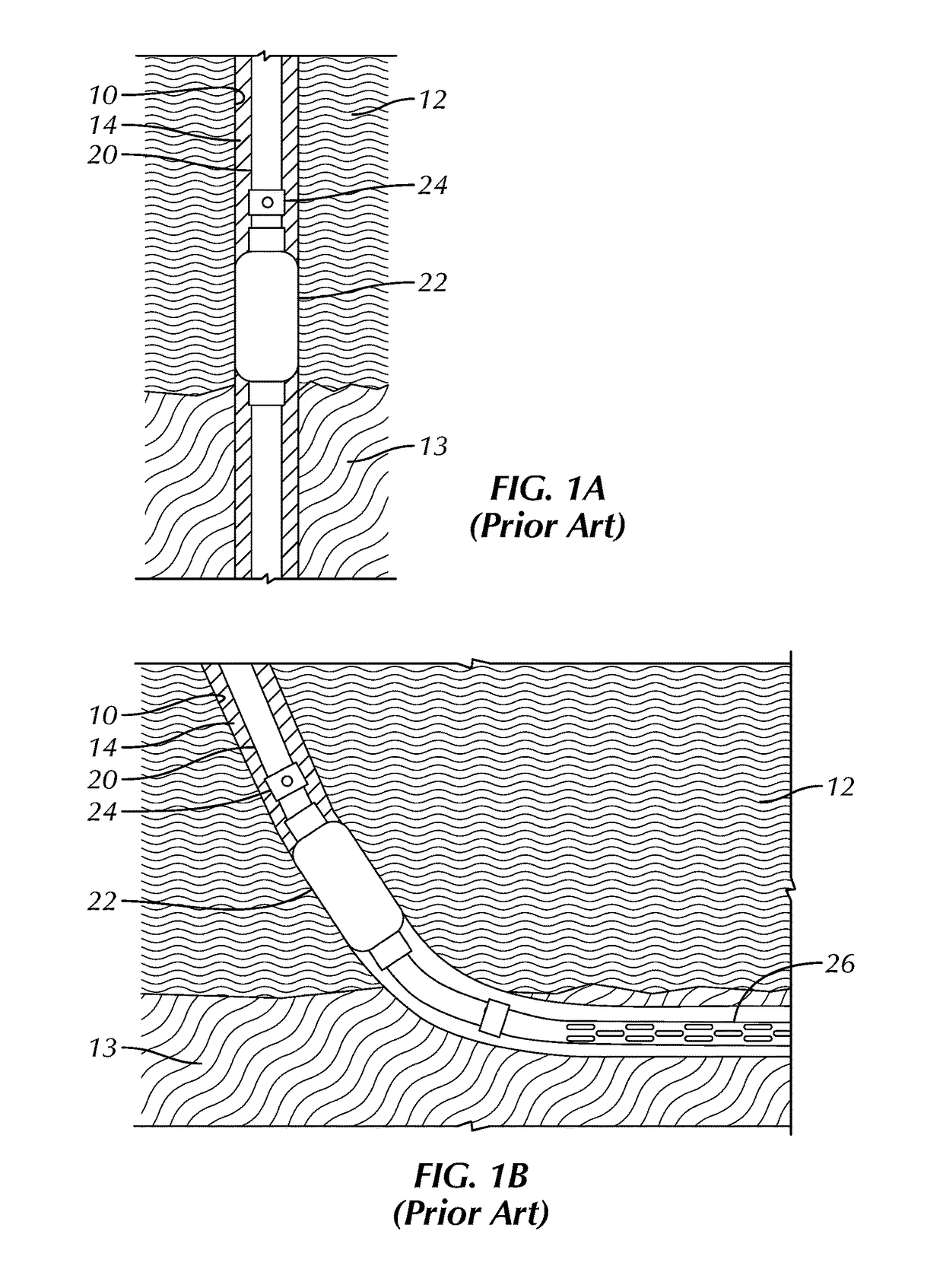Zone select stage tool system
a technology of zone select and tool system, which is applied in the direction of sealing/packing, borehole/well accessories, construction, etc., can solve the problems of difficult to ensure the entire annulus is cemented, undesirable or ineffective cementing from the top or bottom of the casing,
- Summary
- Abstract
- Description
- Claims
- Application Information
AI Technical Summary
Benefits of technology
Problems solved by technology
Method used
Image
Examples
first embodiment
A. First Embodiment of Hydraulically-Operated Stage Tool
[0070]FIGS. 6A-6B illustrate a first embodiment of a hydraulically-operated stage tool 100 according to the present disclosure in cross-sectional and end-sectional views. The stage tool 100 is hydraulically-operated with plugs and is well-suited for deviated wells. As noted previously, the stage tool 100 can be used in conjunction with a packer (see e.g., FIGS. 1A-1B), although it may be used in any other configuration.
[0071]The stage tool 100 includes a housing 101 with an internal bore 102 therethrough. For assembly purposes, the housing 101 can include separate components of a tool case 110 having upper and lower subs 120a-b affixed on the case's ends 118a-b. The upper sub 120a can be a box sub for connecting to an uphole portion of a casing string (not shown), and the lower sub 120b can be a pin sub for connecting to a downhole portion of the casing string, a packer, or the like (not shown) depending on the assembly.
[0072]S...
second embodiment
B. Second Embodiment of Hydraulically-Operated Stage Tool
[0088]FIGS. 8A-8C illustrate a second embodiment of a hydraulically-actuated stage tool 100 according to the present disclosure in cross-sectional and end-sectional views. Many of the components of this second tool 100 are similar to those described above so like reference numerals are used for similar components. This second tool 100 includes a secondary closure mechanism 150 for closing the tool 100 during operations. As shown, the secondary closure mechanism 150 may be an additional component that couples to the end of the tool's housing 101 in place of the upper box sub 120a, which is instead connected to the end of the additional mechanism 150. As an alternative, the tool 100 can be integrally formed with the closure mechanism 150 integrated into the housing 101.
[0089]As best shown in the detail of FIG. 8C, the secondary closure mechanism 150 includes a chamber case 160 that threads to the end of the stage tool's case 110...
third embodiment
C. Third Embodiment of Hydraulically-Operated Stage Tool
[0098]FIGS. 10A-10C illustrate a third embodiment of a hydraulically-operated stage tool 100 according to the present disclosure in cross-sectional and end-sectional views. Many of the components of this third tool 100 are similar to those described above so like reference numerals are used for similar components. This third tool 100 also includes a secondary closure mechanism 150 for closing the tool 100 during operations. As shown, the closure mechanism 150 may be an additional component that couples to the end of the housing 101 in place of the upper box sub 120a, which is instead connected to the end of the additional mechanism 150.
[0099]Although the secondary closure mechanism 150 is shown as an additional component having a case 160, a mandrel 170, and the like, it will be appreciated that the components of the closure mechanism 150 can be incorporated directly into the other components of the tool 100. For example, as wi...
PUM
 Login to View More
Login to View More Abstract
Description
Claims
Application Information
 Login to View More
Login to View More - R&D
- Intellectual Property
- Life Sciences
- Materials
- Tech Scout
- Unparalleled Data Quality
- Higher Quality Content
- 60% Fewer Hallucinations
Browse by: Latest US Patents, China's latest patents, Technical Efficacy Thesaurus, Application Domain, Technology Topic, Popular Technical Reports.
© 2025 PatSnap. All rights reserved.Legal|Privacy policy|Modern Slavery Act Transparency Statement|Sitemap|About US| Contact US: help@patsnap.com



